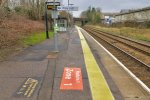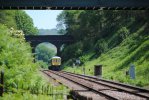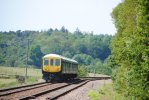DelW
Established Member
- Joined
- 15 Jan 2015
- Messages
- 3,867
That surprises me, having watched a couple of the early test runs last summer. I watched 943 making good speed up the 1:100 from Shalford towards Chilworth, and again at the top of the 1:96 from Dorking towards Gomshall. In both cases I'd say the speed was comparable with the Turbos.A friend at GWR has said 769s are having problems on the gradients of the NDL and that's just the empty test runs. Little confidence at GWR that a train full of passengers and suitcases just won't make it. Slim to zero chance of the 769s entering service on this route apparently.
Of course if the issue is adhesion not power, my experience wouldn't be any guide, as it was a dry sunny day.



